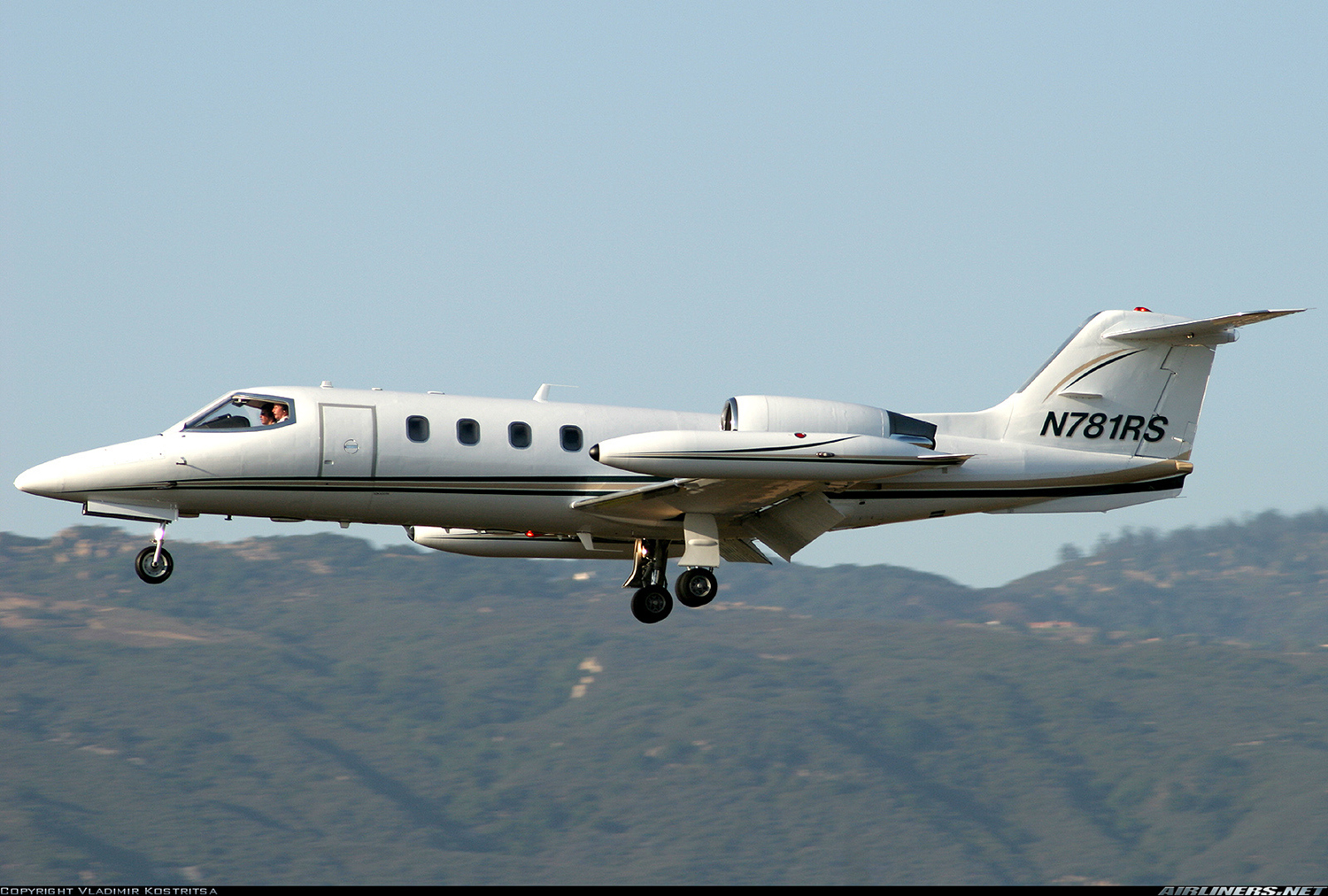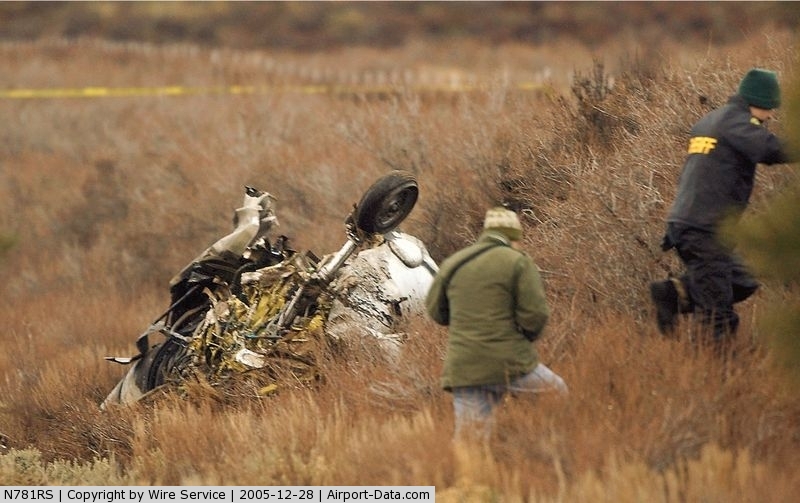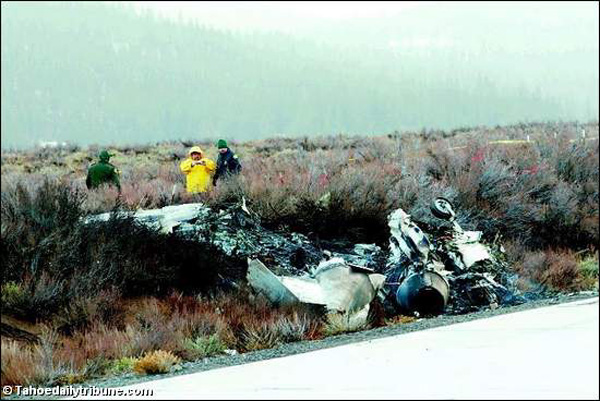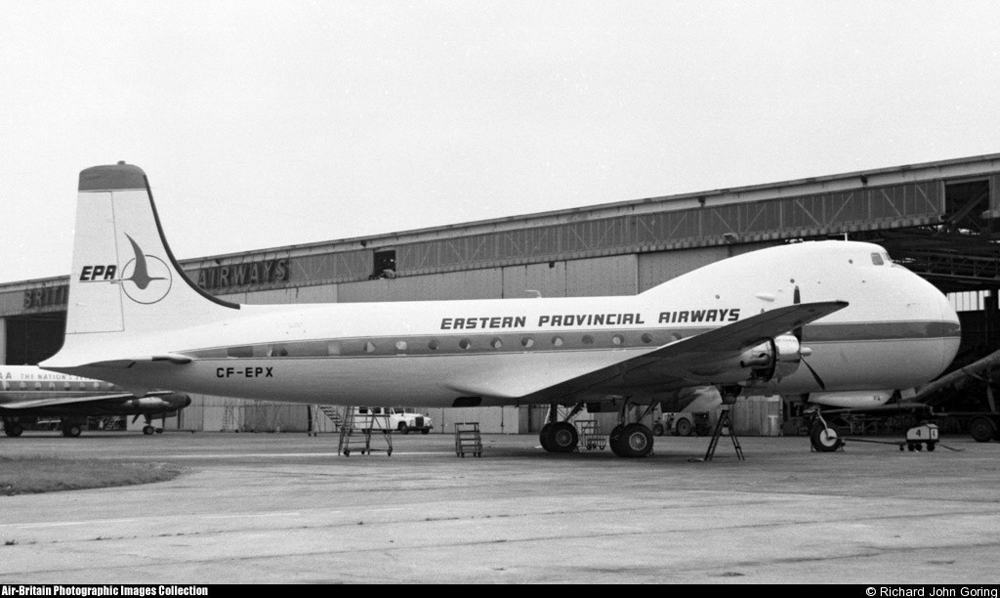Crash of a Learjet 35A in Truckee: 2 killed
Date & Time:
Dec 28, 2005 at 1406 LT
Registration:
N781RS
Survivors:
No
Schedule:
Twin Falls - Truckee - Carlsbad - Monterrey
MSN:
35-218
YOM:
1978
Crew on board:
2
Crew fatalities:
Pax on board:
0
Pax fatalities:
Other fatalities:
Total fatalities:
2
Captain / Total hours on type:
2200.00
Copilot / Total hours on type:
56
Aircraft flight hours:
9244
Circumstances:
The airplane collided with the ground during a low altitude, steep banked, base-to-final left turn toward the landing runway during a circling instrument approach. The airplane impacted terrain 1/3-mile from the approach end of runway 28, and north of its extended centerline. A witness, located in the airport's administration building, made the following statement regarding his observations: "I saw the aircraft in and out of the clouds in a close base for [runway] 28. I then saw the aircraft emerge from a cloud in a base to final turn [and] it appeared to be approximately 300-400 feet above the ground. The left wing was down nearly 90 degrees. The aircraft appeared north of the [runway 28] centerline. The aircraft pitched nose down approximately 30-40 degrees and appeared to do a 1/2 cartwheel on the ground before exploding." ATC controllers had cleared the airplane to perform a GPS-A (circling) approach. The published weather minimums for category C and D airplanes at the 5,900-foot mean sea level airport was 3 miles visibility, and the minimum descent altitude was 8,200 feet mean sea level (msl). Airport weather observers noted that when the accident occurred, the visibility was between 1 1/2 and 5 miles. Scattered clouds existed at 1,200 feet above ground level (7,100 feet msl), a broken ceiling existed at 1,500 feet agl (7,400 feet msl) and an overcast condition existed at 2,400 feet agl (8,300 feet msl). During the approach, the first officer acknowledged to the controller that he had received the airport's weather. The airplane overflew the airport in a southerly direction, turned east, and entered a left downwind pattern toward runway 28. A 20- to 30-knot gusty surface wind existed from 220 degrees, and the pilot inadequately compensated for the wind during his base leg-to-final approach turning maneuver. The airplane was equipped with Digital Electronic Engine Controls (DEEC) that recorded specific data bits relating to, for example, engine speed, power lever position and time. During the last 4 seconds of recorded data (flight), both of the power levers were positioned from a mid range point to apply takeoff power, and the engines responded accordingly. No evidence was found of any preimpact mechanical malfunction. The operator's flight training program emphasized that during approaches consideration of wind drift is essential, and a circling approach should not be attempted in marginal conditions.
Probable cause:
The pilot's inadequate compensation for the gusty crosswind condition and failure to maintain an adequate airspeed while maneuvering in a steep turn close to the ground.
Final Report:



Crash of a Piper PA-46-310P Malibu in Mountain Home: 1 killed
Date & Time:
Nov 22, 1993 at 0111 LT
Registration:
N84PM
Survivors:
No
Schedule:
Twin Falls - Boise
MSN:
46-8408004
YOM:
1984
Crew on board:
1
Crew fatalities:
Pax on board:
0
Pax fatalities:
Other fatalities:
Total fatalities:
1
Captain / Total hours on type:
457.00
Circumstances:
The pilot had been charged with 'lewd and lascivious conduct with a minor.' He was jailed on Friday and released on bond on Saturday. During a meeting with a friend in the pilot's car on Sunday evening, he was drinking beer. The friend said the pilot made comments referring to intentionally crashing the aircraft and that 'he didn't want to die, but didn't know of any other way.' He had a gun in the car and told the friend 'don't call the police or I'll kill myself sooner.' The pilot departed Twin Falls at about 2230 on Sunday night in his PA-46. He flew to Boise, ID (via Ely, NV) before turning back toward Twin Falls. After passing over Boise, intermittent radio contact was made between the airplane and approach control. Radar vectors and descent were issued. Radar contact was lost during descent and pilot announced descending thru 11,000 feet; 38 seconds later, he reported at 6,000 feet. Ground impact was at 4,650 feet. Toxicology tests of the pilot's lung and muscle tissue showed an alcohol level of 175 & 117 mg/dl (0.175% & 0.117%). No preimpact failure of the aircraft was found.
Probable cause:
The pilot's intentional suicide and impairment from consumption of alcohol.
Final Report:
Crash of a Swearingen SA227AC Metro III in Twin Falls
Date & Time:
Sep 24, 1987 at 2325 LT
Registration:
N2689E
Survivors:
Yes
Schedule:
Twin Falls - Twin Falls
MSN:
AC-653
YOM:
1986
Crew on board:
3
Crew fatalities:
Pax on board:
0
Pax fatalities:
Other fatalities:
Total fatalities:
0
Captain / Total hours on type:
2000.00
Aircraft flight hours:
774
Circumstances:
Check pilot was conducting captain proficiency check on another company pilot (pic) under dark night conditions. Subsequent to full stop landing on runway 25, takeoff checklist was recited. PIC commenced takeoff on runway 07. Check pilot simulated V1 engine cut after liftoff. PIC was unable to accelerate to V2, climb, or maintain directional control. Aircraft levelled off, air speed began to decay and aircraft drifted to the right. Check captain failed to take control or terminate engine cut simulation as evolution deteriorated. Aircraft collided with ILS glideslope tower marked by red obstruction lights. Loss of control followed when right wingtip/aileron separated. Aircraft then impacted ground and slid to a stop. Takeoff flap position should be 1/4. Both flaps found near 1/2 flap extended position. Handle found in 1/2 flap detent. Performances charts show aircraft able to reach V2 at 50 feet altitude in 6,500 feet roll, then +575 fpm climb (vyse) at acc wt.
Probable cause:
Occurrence #1: loss of engine power
Phase of operation: takeoff - initial climb
Findings
1. (c) preflight planning/preparation - inadequate - pilot in command
2. (c) raising of flaps - not performed
3. (c) checklist - inattentive - pilot in command
4. (f) emergency procedure - simulated - check pilot
5. Proper climb rate - not possible
6. Directional control - not possible
7. (c) supervision - inadequate - check pilot
----------
Occurrence #2: loss of control - in flight
Phase of operation: takeoff - initial climb
Findings
8. (f) object - tower (marked)
9. Wing, wingtip - separation
10. Flight control, aileron - loss, partial
----------
Occurrence #3: in flight collision with terrain/water
Phase of operation: descent - uncontrolled
Phase of operation: takeoff - initial climb
Findings
1. (c) preflight planning/preparation - inadequate - pilot in command
2. (c) raising of flaps - not performed
3. (c) checklist - inattentive - pilot in command
4. (f) emergency procedure - simulated - check pilot
5. Proper climb rate - not possible
6. Directional control - not possible
7. (c) supervision - inadequate - check pilot
----------
Occurrence #2: loss of control - in flight
Phase of operation: takeoff - initial climb
Findings
8. (f) object - tower (marked)
9. Wing, wingtip - separation
10. Flight control, aileron - loss, partial
----------
Occurrence #3: in flight collision with terrain/water
Phase of operation: descent - uncontrolled
Final Report:
Crash of a Rockwell Aero Commander 500B in Twin Falls
Date & Time:
Apr 2, 1977 at 0355 LT
Registration:
N223LH
Survivors:
Yes
Schedule:
Twin Falls – Boise – Twin Falls – Pocatello – Boise – Twin Falls
MSN:
500-1528-188
YOM:
1965
Crew on board:
1
Crew fatalities:
Pax on board:
0
Pax fatalities:
Other fatalities:
Total fatalities:
0
Captain / Total hours on type:
63.00
Circumstances:
While descending by night to Twin Falls, both engines stopped simultaneously. Due to loss of speed, the airplane lost height. The pilot elected to make an emergency landing when the airplane struck power cables and crashed in a snow covered field. The pilot was injured and the aircraft was damaged beyond repair.
Probable cause:
Double engine failure caused by a fuel exhaustion. The following contributing factors were reported:
- Collision with wires/poles,
- Mismanagement of fuel,
- Miscalculated fuel consumption,
- Fuel exhaustion,
- High obstructions.
- Collision with wires/poles,
- Mismanagement of fuel,
- Miscalculated fuel consumption,
- Fuel exhaustion,
- High obstructions.
Final Report:
Crash of a De Havilland DH.104 Dove in Moses Lake
Date & Time:
May 15, 1973 at 1030 LT
Registration:
N4041B
Survivors:
Yes
Schedule:
Moses Lake - Twin Falls
MSN:
04385
YOM:
1953
Crew on board:
2
Crew fatalities:
Pax on board:
0
Pax fatalities:
Other fatalities:
Total fatalities:
0
Captain / Total hours on type:
15.00
Circumstances:
During the takeoff run, at V1 speed, the crew started the rotation when the left engine lost power. The captain elected to abandon the takeoff procedure but following a lack of coordination and poor experience, the crew lost control of the aircraft that veered off runway and came to rest. Both pilots were uninjured while the aircraft was written off.
Probable cause:
Powerplant failure for undetermined reason. The following factors were reported:
- The crew failed to maintain flying speed,
- The crew failed to follow the approved procedures,
- Misused of flaps,
- Improper emergency procedures,
- Left engine lost power,
- Pilot continued the takeoff and did not feathered the propeller,
- Flaps were retracted.
- The crew failed to maintain flying speed,
- The crew failed to follow the approved procedures,
- Misused of flaps,
- Improper emergency procedures,
- Left engine lost power,
- Pilot continued the takeoff and did not feathered the propeller,
- Flaps were retracted.
Final Report:
Crash of a Convair CV-240-14 in Buhl
Date & Time:
May 14, 1971 at 0702 LT
Registration:
N1015G
Survivors:
Yes
Schedule:
Twin Falls - Twin Falls
MSN:
127
YOM:
1949
Crew on board:
3
Crew fatalities:
Pax on board:
0
Pax fatalities:
Other fatalities:
Total fatalities:
0
Captain / Total hours on type:
2326.00
Circumstances:
Shortly after takeoff from Twin Falls-City County Airport, while climbing, the right engine lost power. As he was unable to feather the right propeller, the captain decided to reduce his altitude and completed a belly landing in a field located in Buhl, some 16 miles northwest of Twin Falls Airport. The aircraft was damaged beyond repair and all three crew members were unhurt. They were completing a local flight on behalf of the United States Department of the Interior.
Probable cause:
Partial loss of the right engine during initial climb caused by the failure of the fuel system. The following factors were reported:
- The pilot-in-command failed to follow the approved procedures,
- Improper emergency procedures,
- Intentional wheels-up landing,
- Partial loss of power on one engine,
- Forced landing off airport on land,
- Propeller not feathered,
- Right engine fuel feed valve diaphragm ruptured.
- The pilot-in-command failed to follow the approved procedures,
- Improper emergency procedures,
- Intentional wheels-up landing,
- Partial loss of power on one engine,
- Forced landing off airport on land,
- Propeller not feathered,
- Right engine fuel feed valve diaphragm ruptured.
Final Report:
Crash of a Aviation Traders ATL-98 Carvair in Twin Falls
Date & Time:
Sep 28, 1968
Registration:
CF-EPX
Survivors:
Yes
Schedule:
Goose Bay – Twin Falls
MSN:
6/7480
YOM:
1944
Crew on board:
5
Crew fatalities:
Pax on board:
33
Pax fatalities:
Other fatalities:
Total fatalities:
0
Circumstances:
The pilot, who had limited experience on Carvair aircraft, possibly wanted to touch down as early as possible on the short runway. The main wheels however struck the top of an embankment about 8 feet from the runway threshold. The pilot overshoot and had to feather the no. 2 prop immediately, because the engine was not developing power. The aircraft circled for a while and then touched down on its nosegear. The plane settled on the left wing and swung off the runway.
Probable cause:
The pilot's distraction with the landing hazard led him to attempt a touchdown dangerously close to the runway threshold. The pilot was assigned to perform a landing on a marginal landing area.





